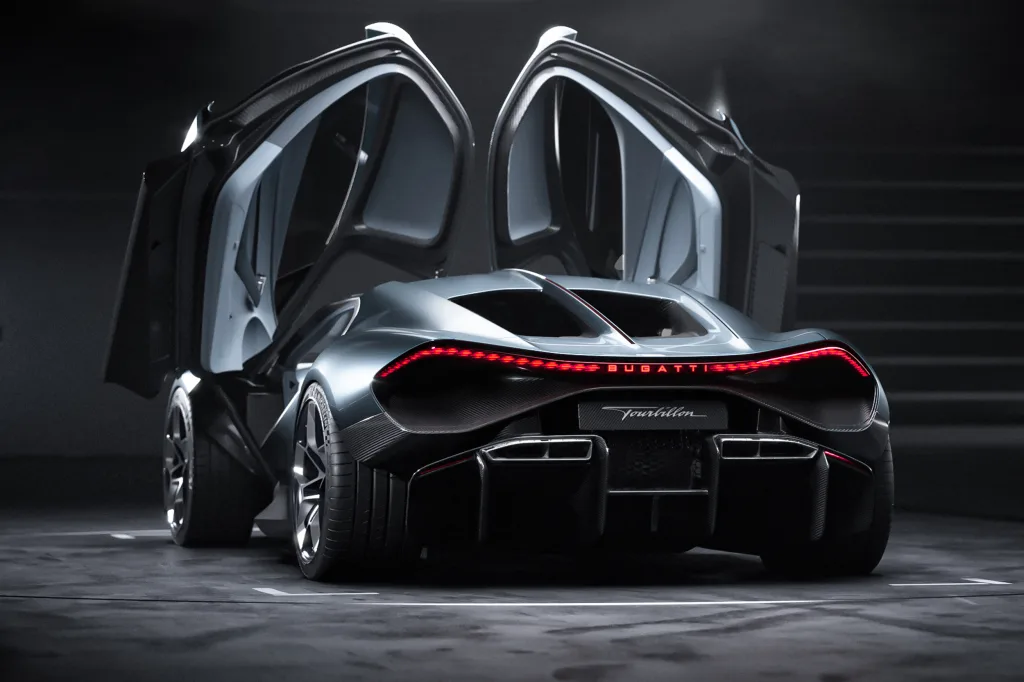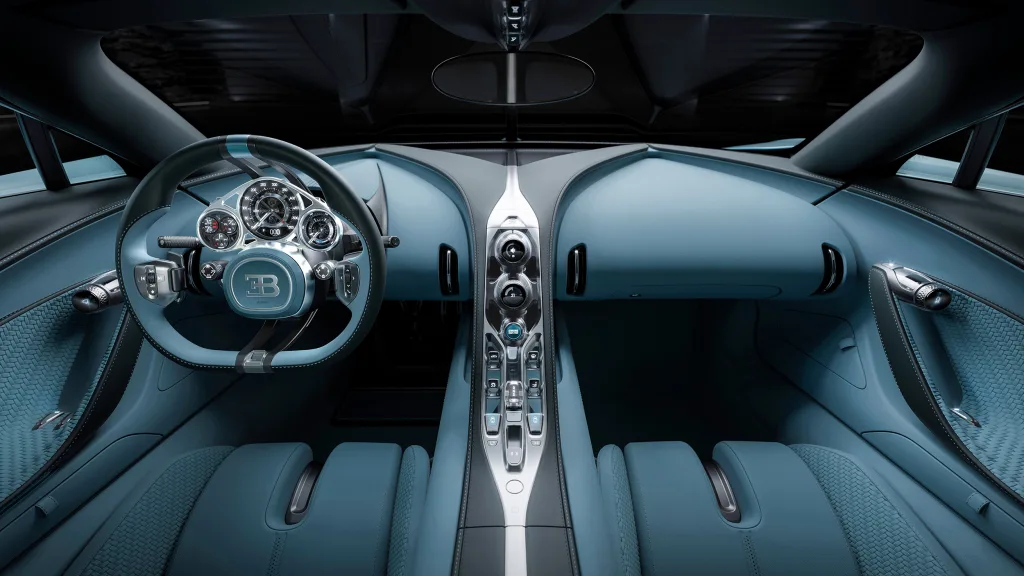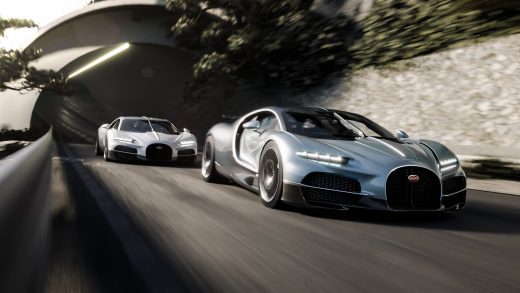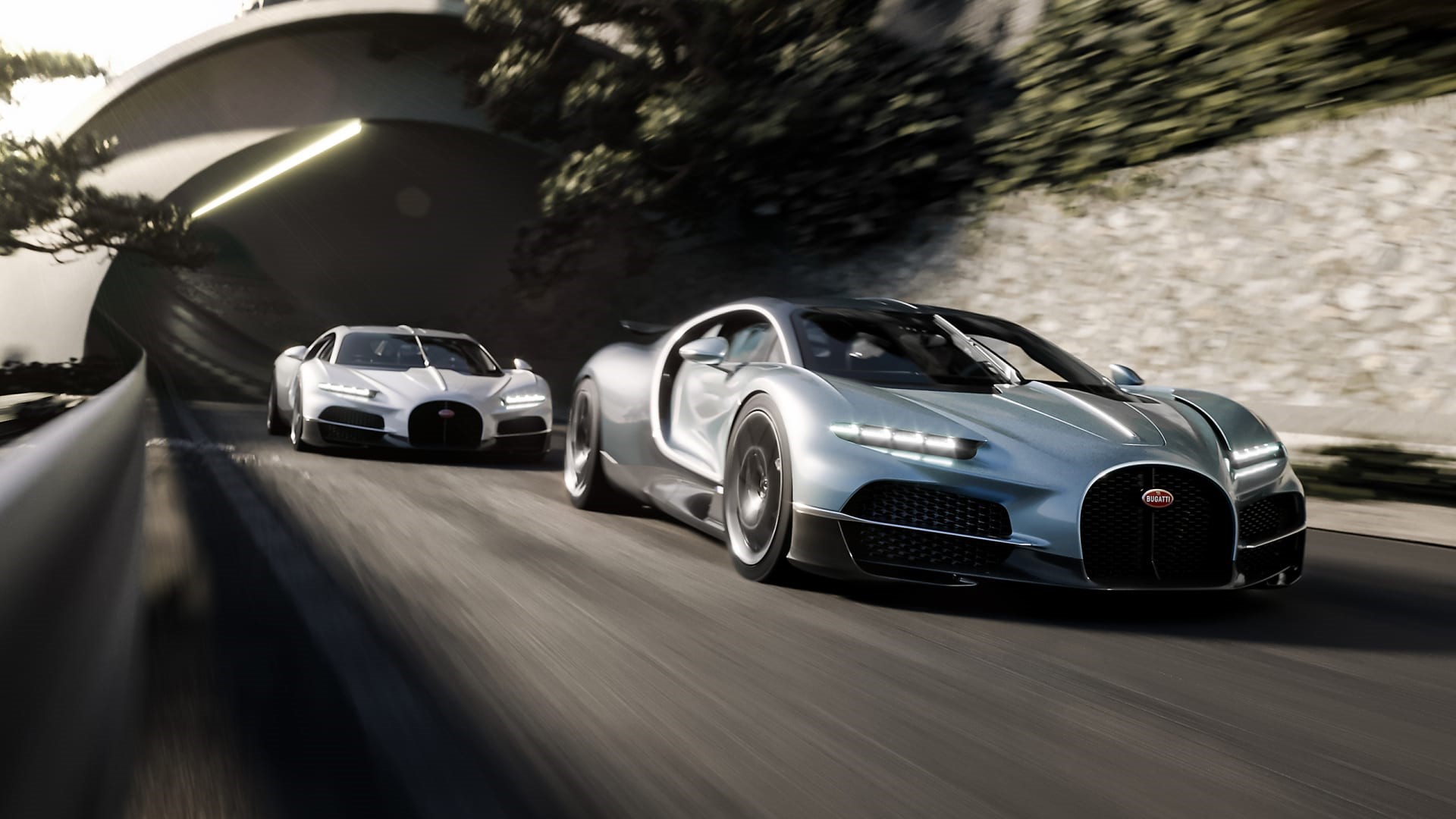What makes the Bugatti Tourbillon a revolutionary hybrid
June 20, 2024
What makes the Bugatti Tourbillon a revolutionary hybrid
CEO Mate Rimac says his company’s new car is an example of class-leading form that is underpinned by function.
BY Sean Evans
Bugatti just unveiled Tourbillon, its next generation of hypercar, an 1,800-horsepower hybrid capable of hitting 276 mph that features rubies and sapphires embedded in the speedometer. The cost to own one of the scant 250 units slated for production? Pricing starts at $4 million and rockets north, depending on your customization of the carbon fiber-drenched coupe. Even though owners will have to wait two years to receive delivery, the queue of prospective buyers already exceeds the volume of allocations. For good reason; this is a revolutionary machine.
Why? For starters, it’s the first Bugatti crafted under Mate Rimac’s stewardship. The 36-year-old Croatian entrepreneur is the CEO of Bugatti Rimac, installed in 2021 after his eponymously electric vehicle hypercar company merged with Bugatti. Rimac brings his mind-bending EV performance to the engineering table, and this is the first hybrid ever to emerge from Molsheim, France, the home of Bugatti’s factory. And, in an era where vehicles only increase in size and weight, as a penalty for increased power output, with Tourbillon, Rimac and Bugatti have achieved the opposite: more oomph from a smaller, lighter car.
“This is the first time in history a hybrid car is lighter than its combustion predecessor,” Rimac tells me, though he declines to give an exact overall weight, saying that final material selections, including titanium or 3D-printed alloys, are still being determined.

Tourbillon is exceptionally beautiful to behold, with design cues borrowed from Bugatti’s century-plus history of timeless automobiles (including the iconic Type 57SC), but also falcons, the fastest animal on the planet. However, everything you see here is an example of class-leading form that is underpinned by function. “Nothing is fake or there to be fancy,” Rimac says. “Everything has a purpose. Take the rubies in the speedometer; those are low friction bearings for the movement of the mechanism for the instrument cluster.”
The name is a departure for Bugatti, which priorly named models after the marque’s successful racing drivers—Louis Chiron, Albert Divo—but for a new era and platform, a different moniker was required. “Naming a car is the hardest thing,” laughs Rimac. “After the fifth proposal, everything sounds the same.” But Tourbillon—a mechanical device that improves the accuracy of high-end watches by counteracting the forces of gravity— was a natural fit, posits Rimac. Coincidentally, one of the first things Rimac did when stepping into the helm at Bugatti was bringing the staff to Switzerland to study watchmakers, to inspire them with the craftsmanship.
The Tourbillion’s design brief was guided by a statement a Bugatti executive made decades earlier: “A Bugatti must be able to go 400 kph [250 miles per hour] and, on the same day, take your spouse to the opera.” To Rimac, this single sentence “defines everything. It can’t be a race car but must perform like one. It must be comfortable, easy for ingress and egress; it gives us all the waypoints.”
To reach race car levels of performance, Rimac tapped famed engine maker Cosworth to codevelop an 8.3-liter naturally aspirated V16 engine, which produces 1,000 horsepower. This is a leap forward from Bugatti’s historic quad-turbocharged 8.0-liter W16 engine, which produces 1,001 horsepower. Replacing those turbos are three electric motors, two on the front axle and one atop the rear, all sourced from Rimac’s technology division. “We make the hybrid system, the battery pack, and most of the electronics,” says Rimac. That augmentation adds another 800 horsepower, though it comes with a weight penalty of 660 pounds.
To compensate, Rimac and the engineers focused on lightening the architecture and individual components. “We integrated the battery pack inside the monocoque, for example,” says Rimac, as opposed to a separate unit beneath the safety cell. Relocating the transmission to the rear freed up space between the passengers, and left room for the battery, far narrower than the gearbox. “The whole car is now narrower, so there’s less area, less weight, and less overall drag,” says Rimac.

On the component level, AI-optimized 3D metal printing was employed for elements like the suspension, which resulted in shaving off 45 percent of the weight compared to the prior model. “Not a single part of this car is out of the box,” says Rimac. “Every element was custom-made for the Tourbillon.”
The mid-mounted V16 engine is 27 millimeters longer than the W16, but instead of lengthening the car, thus adding weight, engineers tilted it down and kept the wheelbase shorter. That angling also aids in the integrated rear diffuser, which actually starts in the front of the car, underneath the seats, and funnels air around the engine. “The diffuser is also our rear crash structure,” says Rimac, noting that they eschewed the commonly used metal beam in the rear covered by a large bumper. “The rear is now lighter, and more open to get hot air out of the engine bay. But we also can leave the rear wheels exposed, which is awesome,” he says.
Development began before Rimac took over Bugatti—“Four years ago, I had to show [Bugatti] what I wanted to do with the company, so I built a 3D printed model of Tourbillon, that had a V16 and three motors”—and testing a working prototype has just begun. “It’s surprising the things you don’t understand until you use the car,” says Rimac. “You can look at charts and graphs forever, but you have to understand the customer and how they will use the vehicle.” Rimac cites the engagement of the combustion engine as one such example. “You don’t want to annoy a customer who paid millions of dollars by turning the engine off at every stoplight,” he says. “Once the engine is on, we don’t turn it off again.”
For Rimac, the Tourbillon represents the first car he’s created where “I have zero regrets.” Though, he quickly brings up one small quibble: “In the rear, we have the gearbox behind the engine. At the end of the gearbox, you have the electric motor. We have the motor’s inverter separate, above the gearbox, connected by cables. Ideally, you’d have those together in one housing—it’s less space, fewer wires, less weight.” However, to pass crash safety standards, a certain reaction time is mandatory for the inverter to disconnect the high voltage from the battery pack. “But the first thing you’d hit in a rear crash is that inverter. There wouldn’t be enough time for the high voltage system to shut down before the inverter gets crushed. So we had to move it. But because this is dictated by the laws of physics and not by costs, I don’t consider it a regret,” he laughs.
Inquire as to his favorite angle of the Tourbillon, and Rimac’s reply is instant: “The naked rolling chassis,” he says. “It’s beautiful.” Though a close second is to look at the car from the back, but slightly to one side. “From this position, when you see the shape of the wheel arch, you would bet your kidney that the rear wheel track is wider than the front,” he grins. “But it’s an optical illusion; it’s not wider at all. I love that.”
Fast Company
(8)



